2023 Bolivia Speed Trials
Images by Jean Turner
The Bolivia Speed Trials kicked off last weekend with tech inspections completed and contestants were ready for shakedown runs.
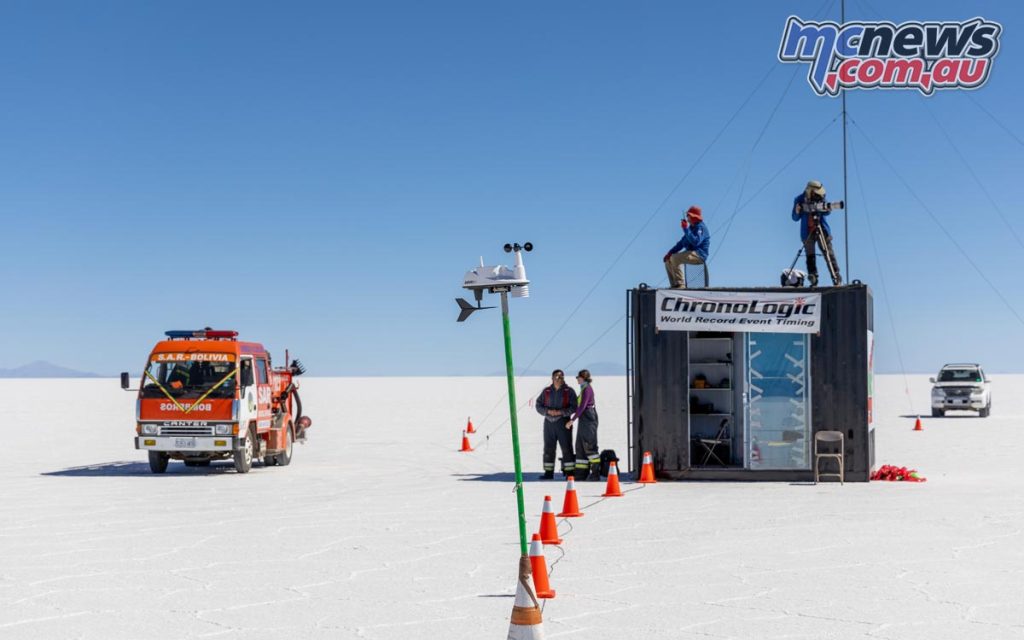
Richard Assen of New Zealand had the longest trek to reach the Salar.
Richard Assen
“I’ve been doing land speed racing for a long time now and I’ve been working on this specific bike for quite a few years,” remarked Assen. “I’ve raced it at Lake Gairdner, (Australia), but we didn’t push the bike to its full potential. Most of that was conditions-based. If you want to come to the best land speed track in the world, this is the place to be, by far. You got 15 miles. You never get 15 miles on any track anymore. Anywhere in the world. If we can get a decent tuning here for the altitude, we’ll be singin’ Dixie, I reckon.”
On Saturday things all came apart for Assen however, things turned wrong when the custom-built turbo-charged Hayabusa-powered machine got out of shape causing Assen to crash during his opening run. The tumble prompted a medical evacuation, and Assen is now recovering at a hospital in Bolivia.
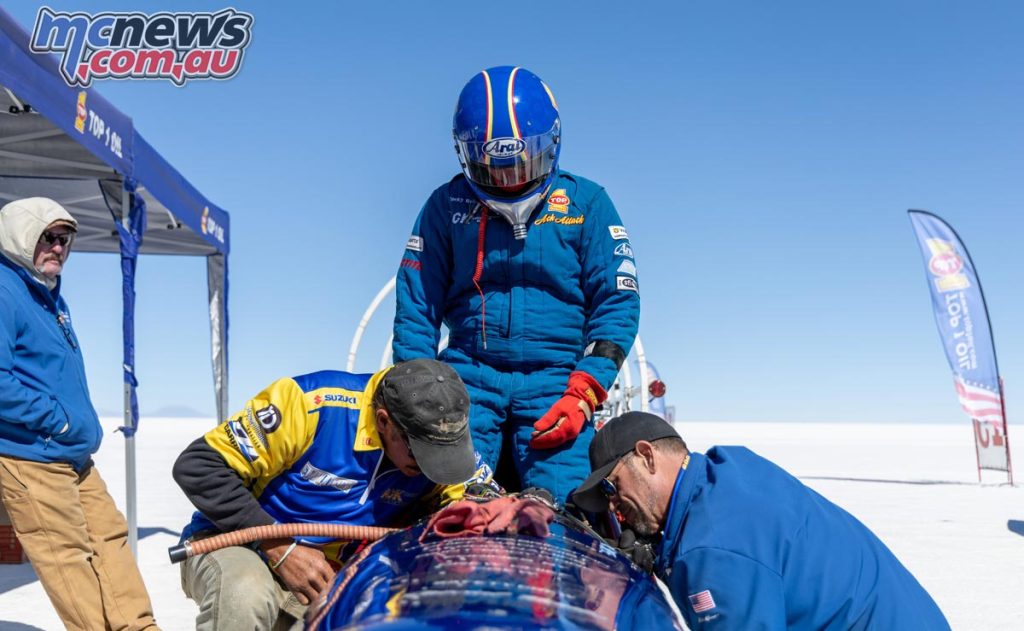
Sunday at the Bolivia Speed Trials saw a day with great conditions, but few who could take advantage of the 0-3 mph winds and fair temperatures.
Technical issues and “salt gremlins” plagued several teams throughout the day, which limited runs on the 15-mile course.
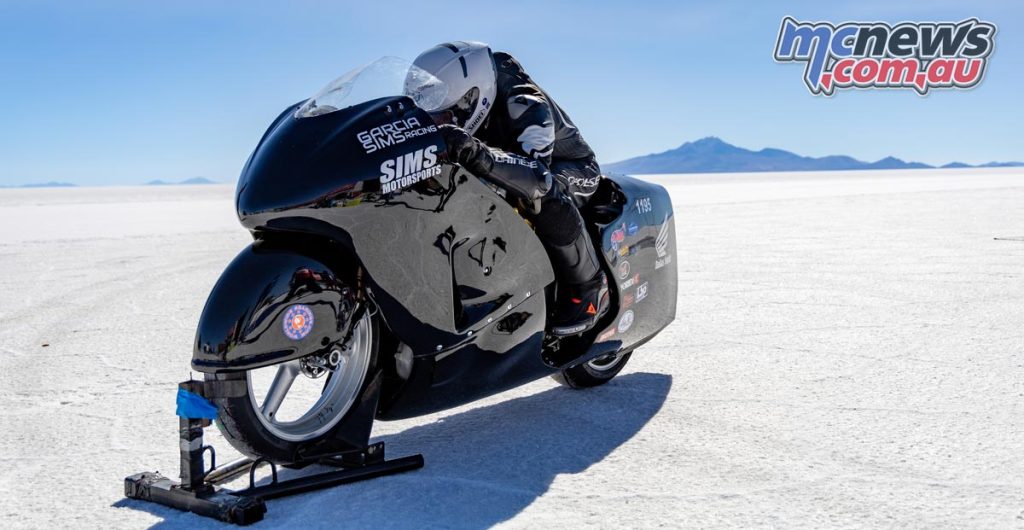
Mike Garcia spent the most time in the saddle on the day and he was rewarded with a one-way pass of 257 mph aboard his partially faired turbo-charged Hayabusa – the speed marked his personal best so far.
Teams stepped up a level on the last day of the 2023 Bolivia Speed Trials this week. The fourth and final day of the meet saw the most traffic on the 15-mile track on the Salar de Uyuni, and at long last, some new FIM World Records.
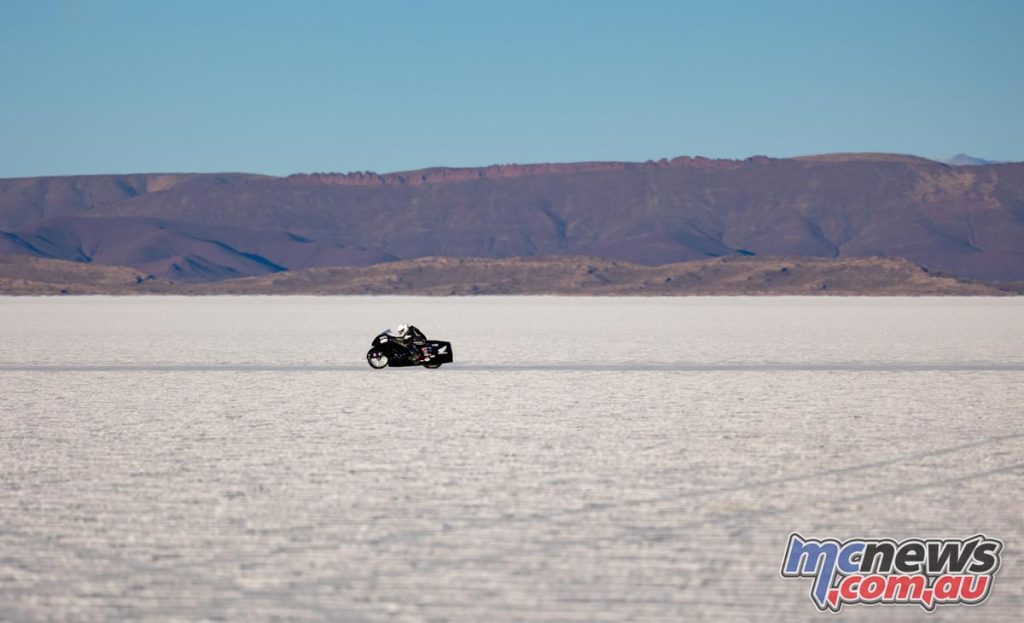
Mike Garcia and Jamie Williams came away from Bolivia with two world records each.
Mike Garcia’s record was an emotional one for the whole paddock, as the record he was running against belonged to Richard Assen, who was currently recovering in the hospital. Luck was already stretched thin for the Garcia/Sims racing team when support vehicle issues left them without a way to get the motorcycle out onto the course. It was none other than Assen’s team that stepped up to help Garcia.
Mike Garcia
“I can’t even put it into words. I am so thankful for all the help we had here,” said an emotional Garcia. “His crew became my crew today. They towed our vehicle down, couldn’t have done it without them. I was running on Richard’s record and before I left, Richard told those guys to tell me to go for it and good luck. I just can’t thank him enough and I wish he was here. I’m glad he’s okay. I can’t even put it into words.”
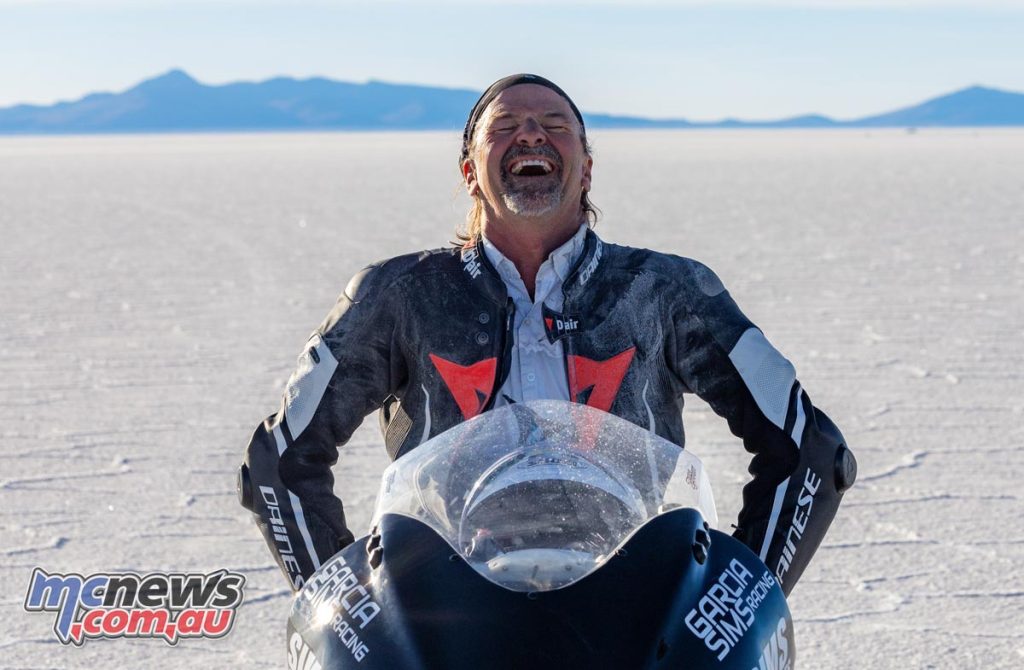
Garcia set an average of 265 mph (427 km/h) on the kilometre and 265 mph (426 km/h) on the mile aboard his partially streamlined 1350cc turbo-charged Hayabusa motorcycle to claim the record that had belonged to Assen for nearly 12 years. Garcia added that he has been trying to get over 250 mph for over 10 years. He was overwhelmed by the accomplishment, and by the sportsmanship demonstrated by the Assen team.
All eyes were also on the Ack Attack team on the final day. After being stymied at the start line the day before, the team was eager to make a run first thing in the morning on the turbo-charged twin-Hayabusa-powered streamliner. Trouble with the landing gear meant that rider Rocky Robinson had the challenge of being push started on two wheels, a prospect that proved to be challenging.
Rocky Robinson – Ack Attack
“We didn’t have the support gears that go up and down. We had a failure with those so we had to start with them up, so I was attached to the vehicle. The start’s really difficult because the bike would want to lean and just turn. And my first start, I tried countering that and I went right off the track, turned left, and we only made it about 50 yards.”
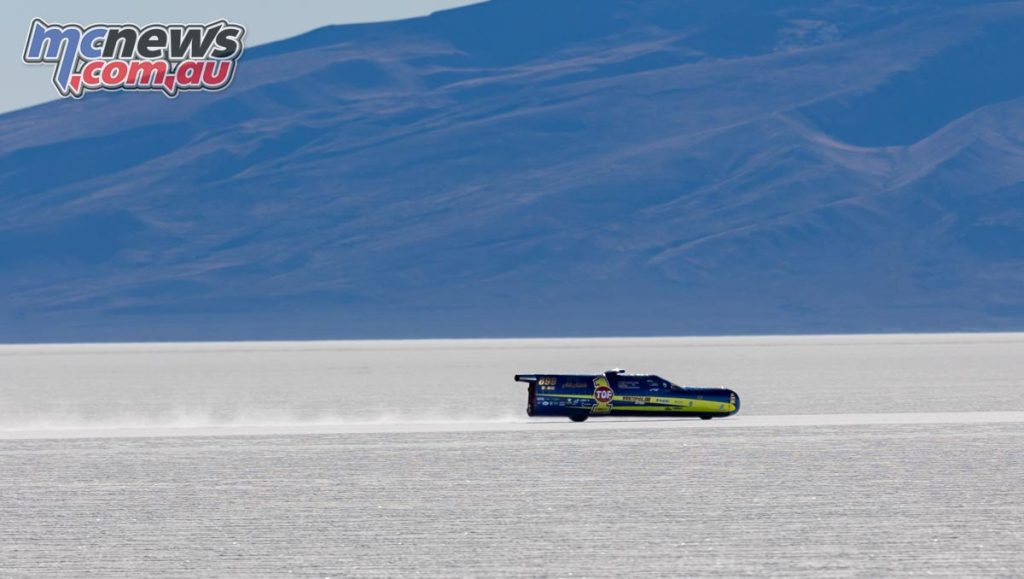
The second run proved to be more successful, as Robinson got off the line, only to come to a stop at the 1 mile when one of the engines slipped out of gear. The third attempt later that afternoon sent Robinson on a wild ride, veering off the course completely and nearly aborting the run, but the former flat tracker was able to gather up the 21.5-foot (6.5m) 2,000-pound (907 kg) streamliner and get it back on course. Unfortunately for the Ack Attack team, the 302-mph pass was their only successful run of the event.
Rocky Robinson
“Even though I was off course, I was able to maneuver and turn the bike right, jump over the berm that separates the course from the raw salt,” Robinson described with a laugh. “It actually ran really good and I made a 302-mph (486 km/h) pass. It was really fun, the course was great and the bike handled great, it just wasn’t making the power it normally does. It’s been five years since I drove a streamliner and five years since I’ve gone over 300 miles an hour so that was the real kick for me. I really enjoyed the run. If nothing else, we got to make a pretty strong run and have some fun and everybody got to see it go. It was the afternoon on the last day before we made a pass down the salt. It was good just to get that in.”
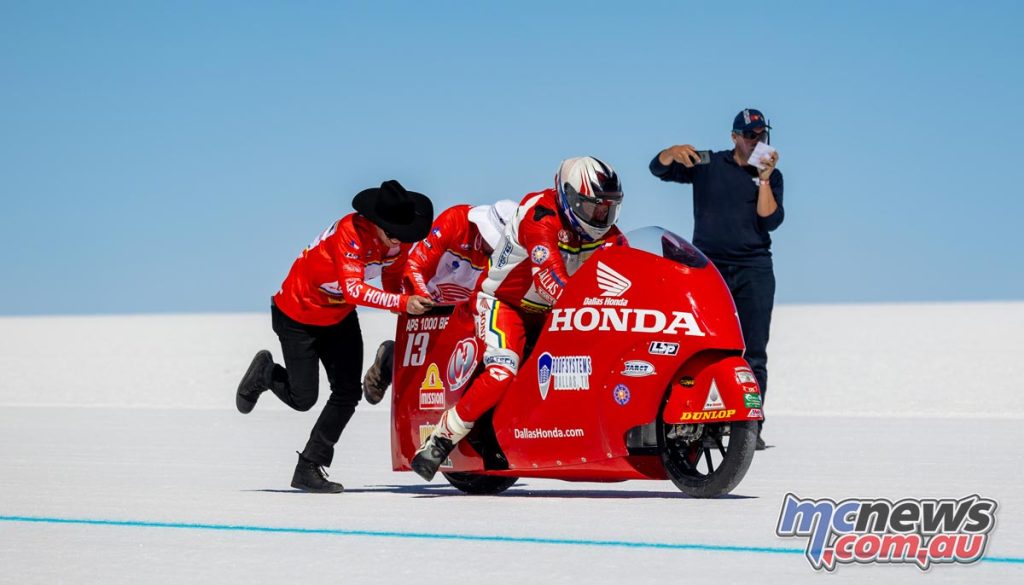
Al Lamb also made several more attempts aboard his 1000 cc partially streamlined Honda CBR in his continued quest for 300 mph. Following a week of frustrating technical issues, the team was able to work through chassis setup issues to come up with a comfortable ride for Lamb, although “Big Red” wasn’t producing its characteristic power. Despite days of troubleshooting, the Dallas Honda team was another that simply ran out of time.
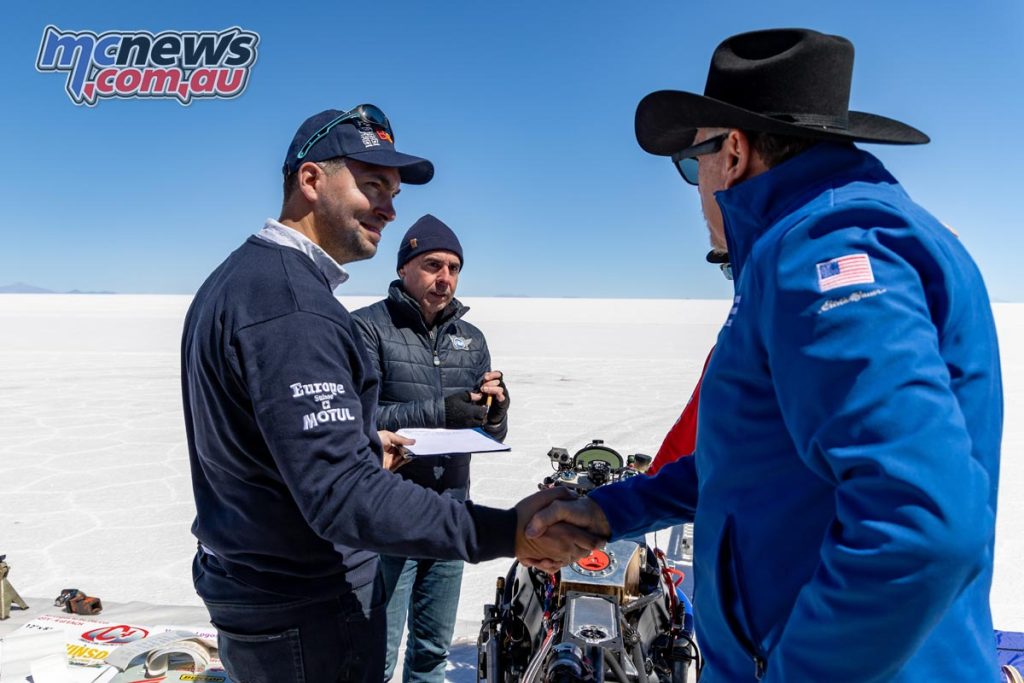
The first record of the meet had gone to Jamie Williams – a first-time competitor at the Bolivia event. Williams rode his 420-horsepower turbine-powered MTT superbike against an open record, meaning any speed would do the trick. Williams captured a pair of FIM World Records with a combined average of 134 mph (216 km/h) and 127 mph (204 km/h) on the kilometre, although it came in an unconventional manner, coasting through both timed mile exits due to engine shutdown.
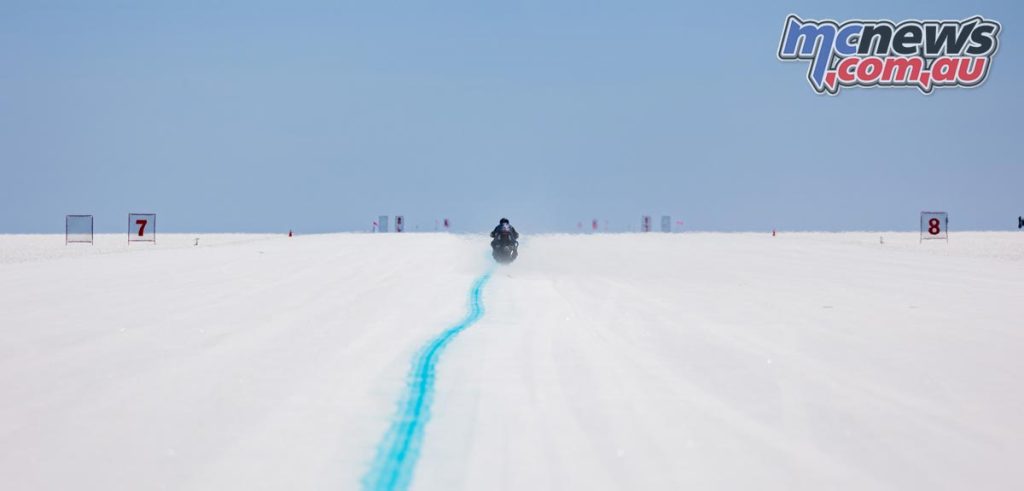
The team then made some modifications to the motorcycle and headed out for a last-minute (literally) run just before sundown. Williams fared better, this time reaching a speed of 180 mph on the MTT, but without any daylight remaining in the final day of the event, he was simply out of time to complete a return run to boost his own record.





















